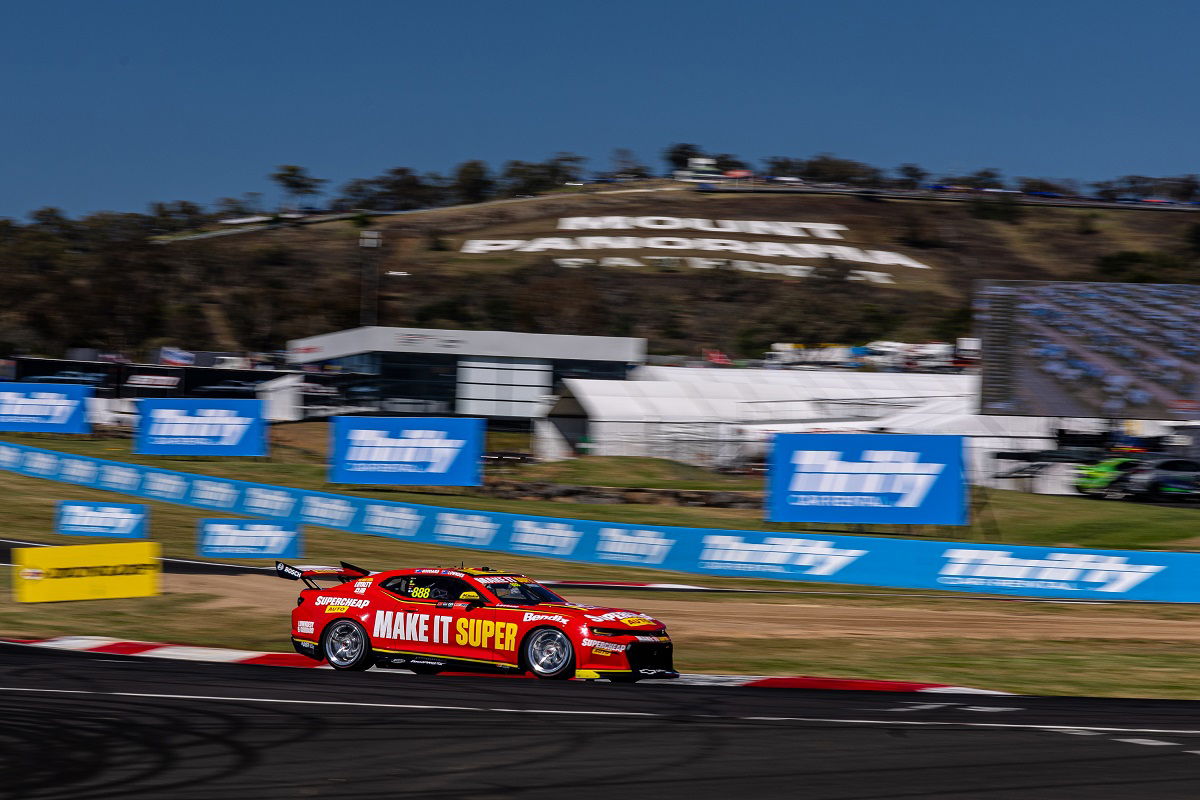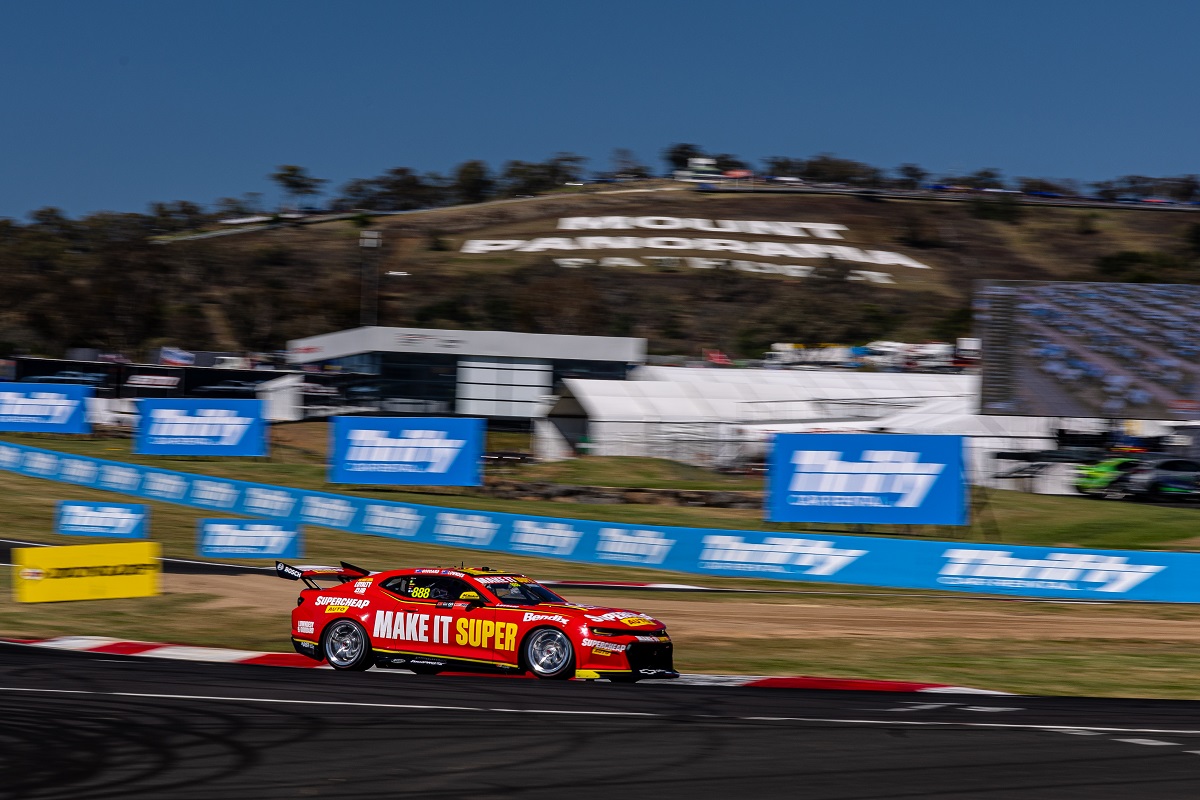

This year’s Repco Bathurst 1000 will be a journey into the unknown, being the first Great Race of the Gen3 era.
Red Bull Ampol Racing Team Manager Mark Dutton told Speedcafe that today’s 161-lapper presents more strategic variables than any time in the last 20 years, and it is easy to see why.
For the first time since 2012, there are no compulsory pit stops, except for the front brake pad change which is mandated from Lap 55 to Lap 120.
Compare that to the entirety of the Car of the Future era, when seven stops was the regulated minimum, and it means more strategic freedom than any time in recent memory.
Speedcafe has been told that fuel range will be 28 to 29 laps in race conditions, possibly more, which makes for a comfortable five-stopper.
Whether that plays out in reality is another question.
Full fuel with a 133-litre Gen3 cell is 103kg, and hence the difference between light and heavy fuel loads is massive.
Note also that the Gen3 engines have less power than those which powered the Gen2 Supercars, albeit with similar power-to-weight, but the fuel cells are about 20 percent larger.
Furthermore, the soft compound of tyre is being used for the first time at Mount Panorama this year.
In years past, lap speed increased as a stint wore on because fuel was being burnt off while the hard compound of tyre was holding on.
That is unlikely to be the case in 2023, and hence teams face a dilemma.
Pit lane transit time is 32 seconds, meaning that is the cost of an extra stop.
However, a longer fill is more dwell time – empty to full is about 56 seconds – and hence track position, with the burden of running longer on worn-out tyres to try and make it worthwhile.
Speaking of tyres, Speedcafe intel is that the right-front corner is in fact the one to watch.
While the rears can be managed, the right-front tyre cops a hammering at The Cutting, across the top, and through Forrest’s Elbow.
Teams will be tempted to run high camber in order to increase grip, but the risk is destroying the inside shoulder.
Then there is driver strategy.
Minimum driving distance is 54 laps, or (just under) two full stints in the Gen3 era instead of two-and-a-bit in the COTF/Gen2 days.
The triple stint home for the primary drivers which had become commonplace is unlikely, at least in the case of full triple stints, given maximum continuous driving time is three-and-a-half hours.
The cars are also simply harder to drive than they were before, meaning a triple is a more physically and mentally taxing feat.
That is where having a capable co-driver is so important; they will take the pressure off their respective primary drivers.
Unsurprisingly, the top teams appear to have quite capable co-drivers.
David Russell is pairing up with pole-sitter Brodie Kostecki and he was metronomic in Practice 5, the latter of the designated co-driver sessions, on Saturday morning.
He was regularly in the 2:07s and occasionally in the low-2:08s during some longer running, which should be considered the target for the part-timers.
Jamie Whincup, partnered with Broc Feeney in the Camaro starting on the other side of the front row, had similar pace, albeit slightly slower.
In terms of the top Ford on the grid, James Moffat spent much of Practice 5 in the low- to mid-2:08s, consistent with his primary driver Cam Waters’ concerns about the race pace of the Mustangs.
Practice is hard to get a particularly reliable read on given only the teams have a full picture of their respective programmes, but the point is this: the pole-sitting Erebus Motorsport Camaro will not be left wanting in terms of co-driver seat time.
Of course, playing a theoretical game is one thing, but the timing and duration of Safety Cars cannot be strategically predicted, and hence being able to think on one’s feet will also be crucial today.
Race start is officially scheduled for 11:15 local time/AEDT.





















Discussion about this post